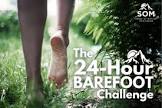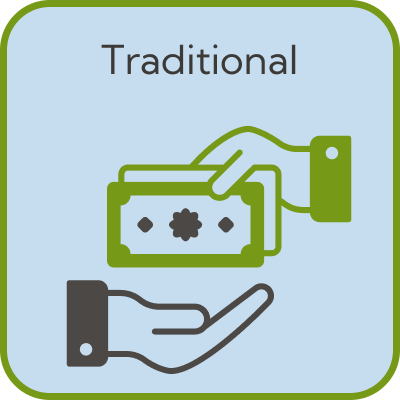Fundraise by participating in Self-organised barefoot walk challenge!
Self-organised barefoot walk challenge
Imagine stepping out of your shoes and socks, feeling the ground beneath your feet as you embark on a self-organized barefoot walk challenge. This unique fundraising event involves walking a predetermined distance without footwear, connecting with nature and raising awareness, and funds for your chosen charity. This distinctive experience not only brings attention to your cause but also symbolizes a walk in the shoes of those less fortunate, making it a powerful statement and a compelling way to gather support.
Organizing a barefoot walk challenge can be straightforward and deeply rewarding. Start by selecting a safe, manageable route—perhaps a scenic path in a local park or a quiet walking trail. Ensure the route you choose is clear of hazards that could hurt barefoot walkers. Once you have your route, set a date and begin promoting your challenge. Use social media, local community boards, and word-of-mouth to generate interest. Encourage friends, family, and community members to sponsor your walk either by pledging a certain amount of money per distance you walk or through a fixed donation.
Why is this event a great idea for charitable fundraising? Walking barefoot can be a powerful empathetic gesture, making this challenge both a physical and a symbolic journey. It helps draw attention not only from those who participate but also from spectators and media, thereby increasing the visibility of the cause you are supporting. Furthermore, the unique nature of the event can make it more likely to go viral, especially if coupled with strong storytelling and social sharing.
Here are a few tips to keep in mind:
- Prioritize safety by inspecting the chosen walking path for potential risks.
- Encourage participants to prepare for the challenge by gradually increasing the time they spend barefoot daily.
- Provide support on the day of the event, such as hydration stations or first aid kits.
- Capture the event through photos and videos to boost online engagement and encourage further donations.
As for which Sponsivity challenge types would suit the barefoot walk challenge, consider the Distance Challenge and the Wager Challenge. The Distance Challenge can motivate participants by linking the amount raised to the distance they manage to walk barefoot. On the other hand, the Wager Challenge could excite potential donors by setting up a daring pledge, such as walking a particularly challenging or unusually long portion of the route barefoot if a certain amount of donations is reached beforehand.
This event is not just a fundraiser; it's a statement. It’s an adventurous way to engage with supporters, drive donations, and make a lasting impact on your chosen cause. So, take that first step barefoot and set off on a journey that promises to be as rewarding as it is challenging.

Sponsivity offers you several ways to raise for Self-organised barefoot walk challenge


🚶 Walking – An Accessible & Inclusive Fundraising Challenge
Walking is one of the most accessible and inclusive ways to fundraise, making it ideal for participants of all ages and fitness levels. Whether it’s a personal step challenge, a long-distance trek, or a community walking event, walking-based fundraising is a great way to raise money while promoting physical activity and well-being.
Why Walking Works for Fundraising:
- Inclusive & Low-Impact: Walking is suitable for everyone, from young children to seniors, making it perfect for family-friendly and corporate fundraising events.
- Endurance & Achievement: Long-distance walks, such as marathon walks, charity hikes, or multi-day treks, provide a strong personal challenge that attracts donor support.
- Social & Team-Oriented: Walking challenges can be done individually or in groups, making them great for workplace fundraising, school events, or community initiatives.
- Easy to Track & Share: Fundraisers can log their daily steps, distance, or time, sharing progress with supporters through social media and fundraising pages.
Examples of Walking-Based Fundraisers:
- Step Challenge: “I’m walking 10,000 steps every day for a month—sponsor me per step!”
- Distance Challenge: “Support me as I trek 50 miles for charity!”
- Themed Walks: Fancy dress charity walks, night-time city walks, or virtual walking challenges add extra engagement.
Walking challenges offer a fun, healthy, and accessible way to raise funds while encouraging people to stay active and support a great cause!
Set bespoke rewards that suit walking
- Wear donor names on a walking vest
- Display a personalised thank-you sign and on the walk
- Videoed song dedicated to your donation
💪 Physical Endurance – A Test of Strength & Stamina for Charity
Physical endurance challenges are some of the most demanding and rewarding ways to raise money for charity. These events push fundraisers to their limits, whether through long-distance running, cycling, swimming, or multi-hour challenges, making them highly compelling for donors. The harder the challenge, the more supporters are inspired to give.
Why Physical Endurance Works for Fundraising:
- High Engagement: Donors love to support fundraisers who commit to extreme endurance challenges, seeing their dedication as a strong reason to give.
- Scalable & Inclusive: Endurance events can range from personal step challenges to Ironman triathlons, making them accessible for all fitness levels.
- Long-Term Fundraising Potential: The extended training and preparation period allow fundraisers to build momentum and keep donors engaged.
- Great for Time & Distance Challenges: Fundraisers can challenge themselves to beat a time, achieve a distance, or push beyond their limits for charity.
Examples of Physical Endurance-Based Fundraisers:
- Marathon or Ultra Run: “Help me raise £2,000 as I take on my first 100K ultra-marathon!”
- Long-Distance Cycle Challenge: “I’m cycling 1,000 miles across the UK for charity—sponsor me per mile!”
- Extreme Fitness Challenge: “I’m doing 24 hours of non-stop exercise—every donation pushes me further!”
Physical endurance fundraisers inspire, challenge, and motivate, creating an unforgettable experience for participants and a powerful reason for supporters to donate.
Set bespoke rewards that suit physical endurance
- Playlist pick - any song of your choice repeated 3 times on my playlist!
- Photo eating your chosen race snack (max 50g!)
- 20 press-ups after the finishline
📅 Self-Organised – Fundraising on Your Terms
Self-organised fundraising challenges put you in control, allowing fundraisers to create a challenge that’s unique, personal, and tailored to their passions. Unlike organised events, self-organised challenges offer complete flexibility—whether it’s a solo endurance test, a creative personal challenge, or a community-driven activity.
Why Self-Organised Challenges Work for Fundraising:
- Full Flexibility: Choose the activity, location, and timing that works best for you, making fundraising accessible and achievable.
- Personal & Meaningful: Custom challenges allow fundraisers to connect with their audience by choosing something significant to them.
- Low-Cost & Inclusive: Without the need for event entry fees or logistics, anyone can participate, making it easy to involve family, friends, or colleagues.
- Perfect for Challenge Chain & Wager Models: Self-organised challenges can inspire others to join in, spreading the impact through viral nominations.
Examples of Self-Organised Fundraisers:
- Personal Running Challenge: “I’ll run 5K every day for a month—support my journey!”
- DIY Fitness Marathon: “I’m doing 1,000 push-ups in a day—every donation pushes me further!”
- Creative Challenge: “I’ll cycle across the country dressed as a superhero—help me hit my fundraising goal!”
Self-organised challenges allow fundraisers to turn their creativity, passions, and dedication into real impact, making it a powerful and accessible way to raise money for a cause.
Set bespoke rewards that suit self-organised event
- Rename the challenge in your honour
- Bring home-baked cookies to the finishline